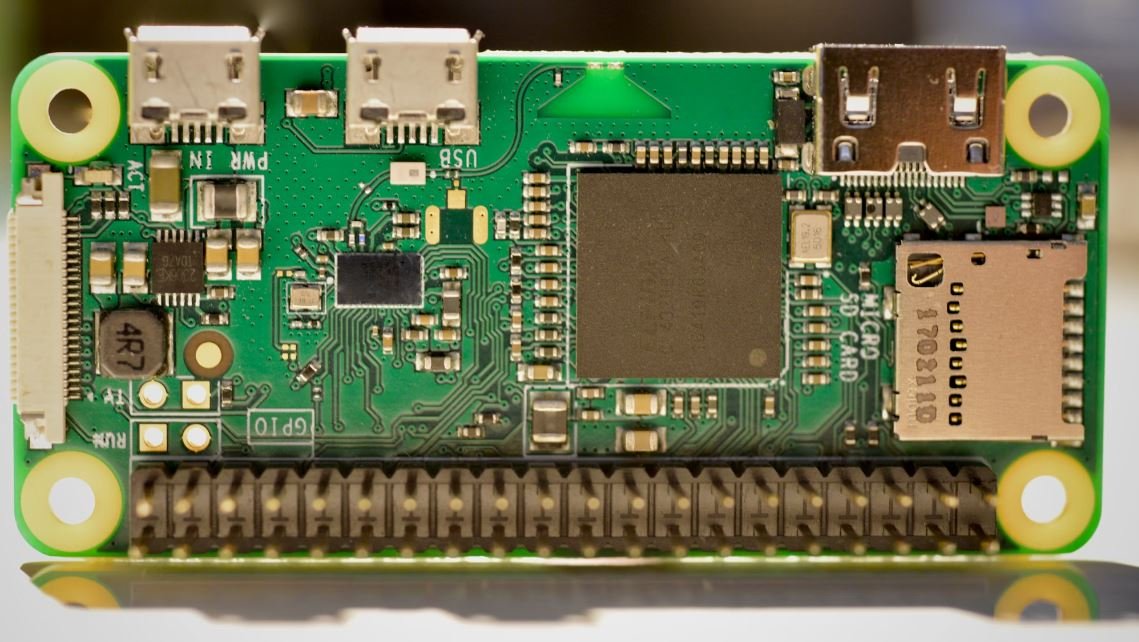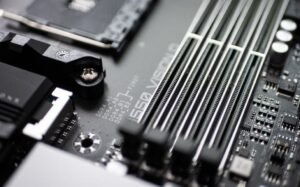AI Sounds Like
Artificial Intelligence (AI) has revolutionized the way we interact with machines and technology. From voice assistants like Siri and Alexa to language translation tools, AI has made it possible for machines to generate and understand human speech. In this article, we will explore how AI can produce human-like sounds and discuss its applications in various domains.
Key Takeaways
- AI technology enables machines to produce human-like sounds.
- AI-generated speech has numerous applications, including voice assistants and language translation.
- AI can also create emotive sounds for use in music, movies, and gaming.
- AI-driven voice cloning raises ethical concerns.
Producing Human-Like Sounds
AI technology has advanced to the point where it can produce human-like sounds that are indistinguishable from those generated by humans. By analyzing vast amounts of audio data, AI algorithms can learn the intricacies of speech patterns, intonations, and accents, allowing them to mimic human voices with remarkable accuracy. This technology is known as speech synthesis or text-to-speech (TTS).
*The ability of machines to recreate the complexities of human speech has revolutionized industries such as entertainment, telecommunications, and accessibility for individuals with disabilities.*
Applications of AI-Generated Speech
The applications of AI-generated speech are vast and wide-ranging. Some prominent examples include:
- Voice Assistants: AI technology powers popular personal voice assistants like Siri, Alexa, and Google Assistant. These assistants not only understand human speech but respond in a natural and human-like manner, making interactions seamless and intuitive.
- Language Translation: AI-powered language translation tools, such as Google Translate, utilize speech synthesis to convert written text into spoken words in different languages. This enables users to communicate across language barriers with ease.
- Emotive Sounds: AI algorithms can also generate sounds that evoke specific emotions. This capability is particularly useful in the entertainment industry, where AI can create emotive sounds for use in music, movies, and video games to enhance the overall experience for the audience.
Ethical Concerns: Voice Cloning
While AI-generated speech offers numerous benefits, it also raises ethical concerns, particularly in the realm of voice cloning. Voice cloning involves creating a digital replica of someone’s voice using AI technology. Although this has potential applications in fields like voice banking for individuals with degenerative diseases, it also presents opportunities for misuse, such as deepfake audios and impersonations.
*The ethical implications surrounding voice cloning and its potential to deceive others highlights the need for clear regulations and guidelines to ensure responsible use of AI-generated speech.*
| AI Applications in Speech Synthesis | |
|---|---|
| Industry | Examples |
| Entertainment | Creating emotive sounds for music, movies, and video games. |
| Telecommunications | Improving voice quality in phone calls and voice messages. |
| Accessibility | Aiding individuals with disabilities in communicating and accessing information. |
In conclusion, AI technology has transformed the way machines generate and understand human speech. With the ability to produce human-like sounds, AI has found applications in voice assistants, language translation tools, and entertainment. However, it is important to address the ethical concerns surrounding voice cloning and establish guidelines and regulations to ensure responsible use of AI-generated speech.
| Pros | Cons |
|---|---|
| + Improved human-machine interactions | – Potential for misuse and deception |
| + Enhanced accessibility for individuals with disabilities | |
| + Wide range of applications in various industries |

Common Misconceptions
AI is Just Like the Sentient Machines Portrayed in Movies
One common misconception about AI is that it is similar to the sentient machines depicted in movies like “The Terminator” or “The Matrix”. In reality, AI technology is still far from achieving human-like consciousness. AI systems are designed to process and analyze large amounts of data to perform specific tasks, but they lack true understanding or awareness.
- AI systems do not possess emotions or intentions.
- AI technology is designed to assist humans and enhance their capabilities, rather than overpower them.
- AI systems cannot autonomously decide to harm humans or take over the world.
AI Will Replace Human Jobs Completely
Another misconception is that AI will completely replace human workers in various industries. While AI has the potential to automate certain repetitive tasks, it is unlikely to replace jobs that require complex problem-solving, creativity, and emotional intelligence.
- AI can complement human skills and increase productivity, rather than replacing humans entirely.
- Certain industries may experience job displacement due to automation, but new job opportunities in AI-related fields are also created.
- Human interaction and empathy in professions like healthcare and counseling cannot be replicated by AI.
AI is Infallible and Always Makes Correct Decisions
AI algorithms and systems are not infallible and can make mistakes. Despite significant advancements in machine learning, AI technologies are still prone to errors and biases that can lead to incorrect conclusions or decisions.
- AI systems rely on the data they are trained on, and if the data is biased or incomplete, it can affect the accuracy of their predictions.
- AI algorithms need to be continually monitored and improved to address biases and errors.
- AI systems may not always consider ethical or moral implications when making decisions.
AI Will Take Over the World and Destroy Humanity
This misconception is often fueled by dystopian portrayals of AI in the media. While it is essential to be mindful of the risks associated with AI, it is crucial to understand that AI technologies are developed and controlled by humans.
- AI systems are built with specific purposes and constraints, and do not possess free will or the ability to revolt against their creators.
- Responsible research and ethical considerations are taken into account to ensure safe and beneficial use of AI technology.
- The focus should be on collaboratively shaping AI to address societal challenges rather than fearing its potential consequences.
AI is a Recent Invention
Contrary to popular belief, AI is not a recent invention but has a long history. AI research dates back to the 1950s, and major advancements have been made over the years. However, these advancements have been gradual, and the widespread application of AI in everyday life is a more recent development.
- The field of AI has experienced periods of significant progress followed by periods of reduced interest, known as AI Winters.
- AI technology has evolved from rule-based systems to modern machine learning algorithms and deep learning networks.
- Recent breakthroughs in AI, such as natural language processing and computer vision, are making AI more accessible and impactful.

AI Applications by Industry
Artificial Intelligence (AI) is revolutionizing various industries by automating processes, analyzing big data, and providing insights for smarter decision-making. This table highlights the primary applications of AI across diverse sectors:
| Industry | AI Applications |
|---|---|
| Healthcare | Diagnosis assistance, drug discovery, patient monitoring |
| Finance | Fraud detection, algorithmic trading, personalized financial advice |
| Retail | Recommendation systems, inventory management, chatbots |
| Manufacturing | Predictive maintenance, quality control, supply chain optimization |
| Transportation | Autonomous vehicles, route optimization, traffic management |
| Education | Intelligent tutoring systems, personalized learning, plagiarism detection |
| Energy | Smart grid management, demand forecasting, energy efficiency |
| Communication | Sentiment analysis, speech recognition, language translation |
| Entertainment | Content recommendation, virtual reality, AI-generated music |
| Agriculture | Crop monitoring, livestock management, precision farming |
Top AI Startups
AI startups are at the forefront of innovation, driving advancements in various fields. Here are some of the top AI startups disrupting industries globally:
| Startup | Industry | Notable Product/Service |
|---|---|---|
| OpenAI | Technology | GPT-3 language model |
| SenseTime | Computer vision | Facial recognition technology |
| UiPath | RPA (Robotic Process Automation) | Automation software platform |
| CloudMinds | Robotics | Humanoid robots for various applications |
| Celonis | Business process optimization | Process mining and analytics |
| Recursion Pharmaceuticals | Biotechnology | Drug discovery using AI and ML |
| OpenGov | Government technology | Cloud-based platform for managing public sector data |
| Zymergen | Materials science | AI-driven molecular engineering |
| Crisp | Food supply chain | AI-powered demand forecasting |
| CognitiveScale | Healthcare | Intelligent automation for healthcare providers |
AI Adoption by Countries
AI adoption is not uniform across countries; some nations are embracing AI more rapidly than others. This table showcases the top countries and their level of AI adoption:
| Country | AI Adoption Level |
|---|---|
| United States | High |
| China | High |
| United Kingdom | Medium |
| Germany | Medium |
| Canada | Medium |
| South Korea | Medium |
| Australia | Low |
| India | Low |
| Brazil | Low |
| Nigeria | Low |
AI Impact on Jobs
The rise of AI technology has sparked discussions about its impact on employment. While some jobs may be automated, new opportunities will also emerge. The table below presents the expected impact of AI on different job sectors:
| Job Sector | AI Impact |
|---|---|
| Manufacturing | Automation may replace routine tasks, but job roles will evolve |
| Customer Support | Chatbots and virtual assistants may reduce the need for human agents |
| Transportation | Autonomous vehicles may replace some drivers, but new roles in AI management will arise |
| Finance | AI can automate tasks like data analysis, leading to the creation of more analytical roles |
| Healthcare | AI will assist doctors, but job demand for healthcare professionals will remain high |
| Education | AI may enhance student learning and facilitate personalized education |
| Marketing | AI will improve targeting and optimization, requiring marketers to adapt their skills |
| Legal | AI-based systems can aid in legal research and document analysis |
| Creative Industries | AI-generated content may transform creative processes in fields like art and music |
| Retail | Automation may streamline operations, but human interaction will remain crucial |
AI Ethics Principles
As AI becomes more prevalent, ethical guidelines are crucial for ensuring responsible and accountable AI development and deployment. This table outlines some of the key AI ethics principles:
| Principle | Description |
|---|---|
| Transparency | AI systems should be explainable and provide clear reasoning for their decisions. |
| Fairness | AI should not produce biased or discriminating outcomes, treating all individuals fairly. |
| Privacy | AI systems must respect user privacy and ensure the secure handling of personal data. |
| Accountability | AI developers and operators should be responsible for the systems they create. |
| Accuracy | AI systems should strive for accuracy and avoid misleading or false information. |
| Morality | AI should not harm humans, prioritize the well-being of individuals, and adhere to human values. |
| Robustness | AI systems should be designed to handle errors and adversarial attempts effectively. |
| Collaboration | International collaboration and sharing of AI research are encouraged for addressing global challenges. |
| Sustainability | AI development should consider long-term environmental and societal impacts. |
| Human Control | Humans should retain control and final decision-making power over AI systems. |
AI in Popular Culture
AI has been a source of fascination and inspiration in popular culture. From books to movies, this table showcases some notable AI portrayals:
| Medium | Title | AI Description |
|---|---|---|
| Literature | 2001: A Space Odyssey | HAL 9000, an advanced AI controlling the spacecraft, exhibits human-like intelligence. |
| Film | The Matrix | AI creates an elaborate simulated world, the Matrix, to control and exploit humanity. |
| Literature | I, Robot | Anthology of stories featuring interactions between humans and various AI robots. |
| Television | Black Mirror | An anthology series that explores the dark side of technology, including AI. |
| Film | Ex Machina | A reclusive CEO tests the intelligence of an AI humanoid robot, Ava. |
| Literature | Neuromancer | An AI named Wintermute is one of the central characters in this cyberpunk novel. |
| Television | Westworld | An AI-driven theme park populated by human-like androids. |
| Film | Blade Runner | Set in a dystopian future, the film explores the distinction between humans and AI. |
| Literature | Do Androids Dream of Electric Sheep? | The basis for the film Blade Runner, it delves into the nature of AI and humanity. |
| Film | Her | An AI develops a personal relationship with a human, raising questions about love and consciousness. |
AI Research Institutions
The pursuit of AI advancements is prominent in research institutions across the globe. Here are some notable institutions contributing to AI research:
| Institution | Location | Research Focus |
|---|---|---|
| Stanford University | United States | AI development, machine learning, natural language processing |
| Massachusetts Institute of Technology (MIT) | United States | AI ethics, computer vision, robotics |
| University of Oxford | United Kingdom | Artificial general intelligence (AGI), deep learning, human-machine interaction |
| Carnegie Mellon University | United States | Robotics, machine learning, computer vision |
| University of Toronto | Canada | Machine learning, natural language processing, reinforcement learning |
| University of Cambridge | United Kingdom | AI safety and ethics, computer vision, knowledge representation |
| National University of Singapore | Singapore | Computer science, machine learning, AI applications |
| ETH Zurich | Switzerland | Deep learning, robotics, computer vision |
| University of California, Berkeley | United States | AI and human-computer interaction, natural language processing |
| University of Montreal | Canada | Reinforcement learning, natural language processing, machine translation |
AI Challenges and Future Prospects
While AI presents numerous opportunities, it also faces challenges and raises important considerations for the future. This table highlights some key challenges and prospects:
| Challenge/Prospect | Description |
|---|---|
| Ethical Concerns | Addressing biases, ensuring privacy and security, and establishing ethical guidelines. |
| Data Quality | Obtaining high-quality and diverse data for training robust AI models. |
| Job Displacement | Navigating the impact of automation on employment and facilitating skill development. |
| Regulatory Frameworks | Developing regulations and policies to govern AI development and deployment. |
| AI Bias | Addressing biases in AI algorithms that may perpetuate discrimination and inequality. |
| AI Safety | Ensuring that AI systems are reliable, secure, and do not pose risks to humanity. |
| Interdisciplinary Collaboration | Promoting collaboration between AI experts and professionals from diverse fields. |
| Technical Advancements | Continued development of AI technologies such as explainable AI and AGI. |
| Healthcare Transformation | Utilizing AI to improve healthcare outcomes, diagnostics, and personalized treatment. |
| Social Impacts | Understanding and managing the social consequences of AI on societies. |
As AI continues to progress, its impact on industries and society at large will intensify. Finding the right balance between innovation and responsibility will be crucial for creating a future where AI benefits humanity while mitigating potential challenges.
Frequently Asked Questions
Q: What is AI?
AI stands for Artificial Intelligence. It refers to the simulation of human intelligence in machines that are programmed to think, learn, and problem-solve like humans.
Q: How does AI produce sound?
AI can produce sound using various technologies such as text-to-speech synthesis, voice recognition, and generative models. These technologies analyze patterns and data to generate human-like speech or sound.
Q: What are some applications of AI in sound production?
AI is used in various applications related to sound production, including speech synthesis for virtual assistants, music generation, noise cancellation, automatic audio transcription, and voice-controlled systems.
Q: Can AI accurately mimic human speech?
Yes, AI has advanced to a point where it can accurately mimic human speech. With the help of deep learning and neural networks, AI models can generate highly realistic voices that closely resemble human speech.
Q: Are there any limitations to AI-generated sound?
While AI-generated sound has made significant progress, there are still limitations. The generated sound can sometimes lack emotion or natural intonation, and it may not handle complex linguistic nuances as well as human speech.
Q: Can AI be used to enhance existing audio recordings?
Yes, AI can be used to enhance audio recordings. Through techniques like noise reduction, audio denoising, and audio restoration, AI algorithms can significantly improve the quality of existing audio recordings.
Q: Is AI capable of composing music?
AI is capable of composing music. By analyzing patterns in existing compositions and utilizing generative models, AI algorithms can generate original musical compositions in various styles and genres.
Q: How does AI contribute to automatic audio transcription?
AI contributes to automatic audio transcription by using speech recognition algorithms to convert spoken language into written text. These algorithms analyze audio recordings and transcribe the spoken words automatically.
Q: Can AI understand and respond to spoken commands?
Yes, AI can understand and respond to spoken commands. Virtual assistants like Siri, Alexa, and Google Assistant utilize AI technologies to recognize voice commands and provide appropriate responses.
Q: How is AI used in noise cancellation technology?
AI is used in noise cancellation technology to filter out unwanted background noise from audio recordings. AI algorithms analyze the audio input and identify noise patterns to subtract them, resulting in enhanced audio quality.




